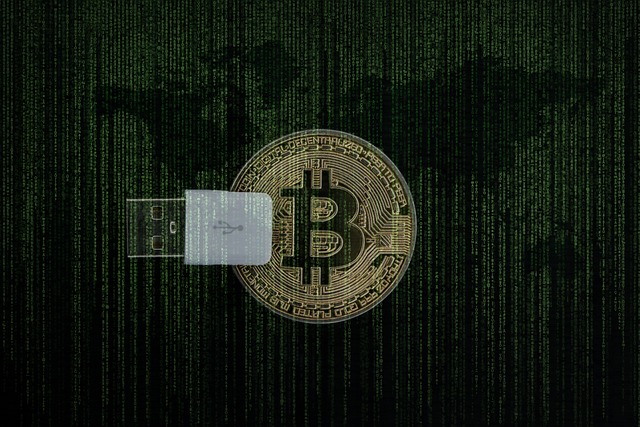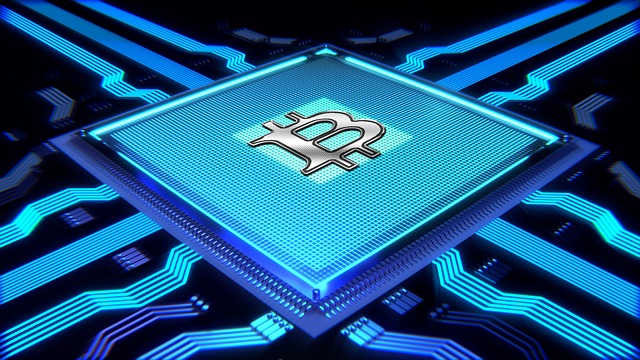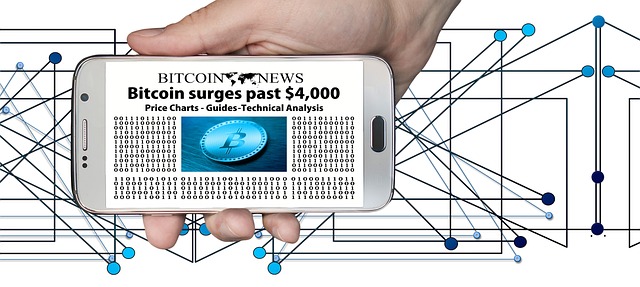Decentralized Finance System vs. Traditional Banking: A Comparative Analysis
Decentralized Finance System vs. Traditional Banking: A Comparative Analysis

Exploring the World of Decentralized Finance
Decentralized finance, also known as DeFi, is a rapidly emerging sector that is transforming the traditional financial landscape. At its core, DeFi is built on blockchain technology, which enables the creation and execution of financial applications without the need for intermediaries like banks. This decentralized nature brings a whole new level of autonomy and freedom to users, opening up endless possibilities for financial innovation.
One of the key features of DeFi is its inclusivity. Unlike traditional banking systems, which often have stringent eligibility criteria and exclude certain demographics, DeFi platforms are open to anyone with an internet connection. This accessibility empowers individuals who are unbanked or underbanked, providing them with the opportunity to access financial services and participate in the global economy. Moreover, the decentralized nature of DeFi ensures that financial transactions are transparent and resistant to censorship, enhancing trust and reducing the risk of corruption.
Understanding the Foundations of Traditional Banking
Traditional banking has long been the backbone of the global financial system. Its foundations lie in the establishment of physical brick-and-mortar banks, where customers can deposit their money and borrow funds for various purposes. The key principle of traditional banking is the concept of centralization, where a centralized authority, typically a bank, manages and controls the flow of money. This central authority plays a crucial role in managing customer accounts, facilitating transactions, and providing various financial services, such as loans and mortgages.
In traditional banking, customers rely heavily on intermediaries, namely the banks themselves, to ensure the safety and security of their funds. The bank acts as a trusted custodian, safeguarding the deposits and offering a range of financial products tailored to different needs. While this centralized structure has provided stability and a sense of security for many years, it also poses certain limitations. The intermediation of banks can result in higher costs and longer processing times for transactions, and access to banking services may be limited in certain regions or demographics. Nonetheless, traditional banking continues to be a significant player in the global financial landscape, serving millions of individuals and businesses worldwide.
Key Differences: Centralization vs. Decentralization
When it comes to the world of finance, centralization and decentralization represent two opposing approaches. Centralization refers to a system where power and authority are concentrated in a central entity, such as a traditional bank. In this model, decisions are made by a few key individuals who have control over the entire system. On the other hand, decentralization is a more democratic approach, where power is distributed among various participants. In the context of finance, this means that decisions and transactions are made collectively, without the need for a central authority.
One of the key differences between centralization and decentralization is the level of control and autonomy individuals have over their finances. In a centralized system, individuals often have limited control and are bound by the rules and regulations set by the central authority. On the contrary, in a decentralized system, individuals have more control over their finances as they can directly participate in decision-making and execute transactions. This empowers individuals and promotes financial inclusivity by allowing anyone to participate in the financial system, regardless of their background or geographic location.
Accessibility and Inclusivity: Who Benefits More?
As we delve into the world of decentralized finance, one of the crucial aspects to consider is the accessibility and inclusivity it offers. Traditional banking systems have long been criticized for their limited reach and exclusionary practices that leave many individuals marginalized. On the other hand, decentralized finance, facilitated by blockchain technology, aims to democratize access to financial services, leveling the playing field for individuals who have historically been underserved.
In a centralized system, individuals may face numerous hurdles to access financial services, such as high fees, stringent eligibility criteria, and geographical limitations. This often leads to a significant portion of the population being excluded from basic financial services, leaving them unable to participate in economic activities and hindered in their efforts to improve their circumstances. In contrast, decentralized finance opens up pathways for greater accessibility and inclusivity by removing these barriers and enabling individuals to interact directly with the financial system, irrespective of their background or location.
By leveraging blockchain technology, decentralized finance platforms empower users to acquire financial services without relying on intermediaries such as banks. This not only reduces costs but also provides more opportunities for individuals who may not meet the traditional banking system’s requirements. Additionally, decentralized finance allows for greater financial inclusion by removing the need for physical infrastructure, essentially giving anyone with an internet connection the means to transact and save money.
However, it is important to note that while decentralized finance holds immense potential for accessibility and inclusivity, challenges and limitations still exist. For instance, access to stable internet connections and technological literacy can be barriers for individuals in underserved communities. Furthermore, regulatory frameworks play a crucial role in ensuring that decentralized finance remains fair, secure, and protects the rights of individuals.
As we explore the benefits and drawbacks of decentralized finance from an accessibility and inclusivity standpoint, it becomes evident that individuals who have traditionally been excluded from the financial system stand to benefit more from this innovative approach. Nonetheless, it is crucial to address the challenges that hinder adoption and maximize the potential of decentralized finance to create a more inclusive and accessible financial ecosystem.
Security and Transparency: A Closer Look
Security and transparency are two fundamental aspects that have always been at the heart of any financial system. In traditional banking, security measures are put in place to protect customers’ assets from unauthorized access and fraud. Banks have robust systems in place, such as encryption and advanced authentication methods, to safeguard sensitive information. While these measures provide a certain level of security, the centralized nature of traditional banking makes it vulnerable to cyber attacks and data breaches. On the other hand, decentralized finance (DeFi) leverages blockchain technology, which inherently provides a more secure environment due to its decentralized nature. It eliminates the need for intermediaries and distributes control across a network of computers, making it extremely difficult for hackers to compromise the system. Furthermore, the transparency offered by blockchain allows for real-time visibility of transactions, ensuring accountability and reducing the risk of financial malpractice.
The Role of Intermediaries: Banks vs. Blockchain
In today’s financial landscape, intermediaries play a crucial role in facilitating transactions between individuals and organizations. Traditionally, banks have been the go-to intermediaries, offering various services such as deposit-taking, lending, and payment processing. They act as trusted custodians of our funds, providing a sense of security and convenience. However, with the emergence of blockchain technology, a new type of intermediary has entered the scene – decentralized platforms that operate on the principles of transparency and peer-to-peer transactions.
Banks have long held a central position in the financial ecosystem, acting as gatekeepers to money and providing financial services to individuals and businesses. They have built extensive networks and infrastructures that enable them to handle large-scale transactions efficiently. Customers rely on banks to safeguard their funds and process payments quickly. On the other hand, blockchain technology challenges the traditional role of banks by enabling direct exchange of value without the need for intermediaries. Blockchain platforms, such as cryptocurrencies, offer a decentralized alternative that aims to remove the need for middlemen, making transactions more efficient and transparent.
• Banks have traditionally acted as intermediaries in financial transactions, offering services such as deposit-taking, lending, and payment processing.
• They provide a sense of security and convenience by acting as trusted custodians of funds.
• Blockchain technology has introduced decentralized platforms that operate on the principles of transparency and peer-to-peer transactions.
• These platforms challenge the traditional role of banks by enabling direct exchange of value without intermediaries.
• Blockchain platforms aim to make transactions more efficient and transparent by removing the need for middlemen.
Evaluating Efficiency: Speed and Cost Factors
When it comes to evaluating efficiency in the world of finance, two key factors to consider are speed and cost. Traditional banking systems have long been criticized for their slow transaction processing times, often taking days or even weeks for money to be transferred between accounts. Additionally, these transactions may come with hefty fees, especially for international transfers.
On the other hand, decentralized finance, powered by blockchain technology, promises faster and cheaper transaction processing. With cryptocurrencies like Bitcoin and Ethereum, transactions can be completed within minutes or even seconds, regardless of geographical boundaries. Moreover, the fees involved in these transactions are generally lower compared to traditional banking systems. This speed and cost efficiency are made possible by the decentralized nature of the blockchain, eliminating the need for intermediaries and streamlining the entire process.
Regulatory Frameworks: How Do They Differ?
The regulatory frameworks governing traditional banks and decentralized finance differ significantly, reflecting the distinct nature of these systems. Traditional banking operates within a heavily regulated environment, with established authorities overseeing compliance and protecting the interests of consumers. These regulations ensure stability and accountability in the financial sector, but they often come at the cost of limited accessibility for certain individuals and businesses. On the other hand, decentralized finance, enabled by blockchain technology, operates in a more decentralized and autonomous manner, without a central governing authority. This lack of centralized regulation may provide more flexibility and freedom for users, but it also raises concerns about potential risks, fraud, and lack of legal protection.
Understanding the differences in regulatory frameworks is crucial for individuals and institutions deciding which system is right for them. Traditional banking offers a well-established framework that provides a secure and regulated environment. This system offers reassurance to consumers who value stability and trust in financial transactions. In contrast, decentralized finance is still in its infancy, with regulatory frameworks constantly evolving to accommodate the unique challenges posed by a decentralized ecosystem. While this may provide greater flexibility and innovation, it also requires users to take on additional responsibilities in terms of security and due diligence. As the shift towards decentralization gains momentum, striking a balance between innovation and ensuring consumer protection will be crucial for the future of finance.
Innovations and Disruptions: The Future of Finance
As we look ahead to the future of finance, we can expect to witness a myriad of innovations and disruptions that will reshape the industry. Technology will undoubtedly play a central role in driving these changes, as it has already started to do so. One key area of focus is the development of digital currencies and blockchain technology, which have the potential to revolutionize the way we transfer and store value. These decentralized systems offer greater security, speed, and transparency compared to traditional banking methods, making them an attractive option for many.
Another area where we can expect to see significant disruption is in the realm of payments.


These are just a few examples of the innovations and disruptions that we can anticipate in the future of finance. The industry is constantly evolving, driven by technological advancements and changing consumer needs. As individuals, it’s crucial to stay informed about these changes and evaluate which system suits our preferences and financial goals. Ultimately, the future of finance holds great potential for creating a more inclusive, efficient, and secure financial system for all.
Making Informed Choices: Which System is Right for You?
When it comes to making informed choices about which financial system is right for you, it is essential to carefully consider your needs and priorities. Traditional banking has long been the established norm, offering a sense of familiarity and trust. It provides a wide range of services, including savings accounts, loans, and investment opportunities.

While both systems have their advantages and disadvantages, it ultimately boils down to your individual preferences and risk tolerance. If you value the stability and familiarity that come with traditional banking, as well as the assurance of regulatory frameworks and the support of experienced intermediaries, then the traditional banking system may be the suitable choice for you. However, if you are tech-savvy, open to embracing new innovations, and seek quick, cost-effective transactions with potentially higher financial gains, then decentralized finance could be the right fit. The decision-making process requires careful consideration of factors such as convenience, accessibility, security, and long-term goals. By thoroughly understanding the foundations, differences, and potential implications of each system, you can make an informed choice that aligns with your financial aspirations.
What is decentralized finance (DeFi)?
DeFi refers to a system where financial transactions and services are built on blockchain technology, eliminating the need for intermediaries like banks.
What are the foundations of traditional banking?
Traditional banking is built on centralized systems where financial transactions and services are governed by banks and regulated by authorities.
What are the key differences between centralization and decentralization?
Centralization involves relying on a central authority like a bank, while decentralization removes intermediaries and allows for peer-to-peer transactions.
Who benefits more from decentralized finance in terms of accessibility and inclusivity?
DeFi aims to provide financial services to anyone with internet access, especially those who are unbanked or underbanked, thus promoting financial inclusivity.
How does decentralized finance ensure security and transparency?
Decentralized finance relies on blockchain technology, which provides a transparent and secure transaction history that is visible to everyone on the network.
What is the role of intermediaries in traditional banking compared to blockchain?
In traditional banking, intermediaries like banks play a crucial role in facilitating transactions, while in blockchain, transactions are directly between participants, eliminating the need for intermediaries.
How do efficiency factors like speed and cost differ between traditional banking and decentralized finance?
Decentralized finance offers faster and cheaper transactions compared to traditional banking, as it eliminates the need for manual processing and reduces associated fees.
How do regulatory frameworks differ between traditional banking and decentralized finance?
Traditional banking operates within strict regulatory frameworks set by governments, while decentralized finance is still evolving and has fewer regulations in place.
What can we expect in terms of innovations and disruptions in the future of finance?
The future of finance is likely to witness more innovations and disruptions, with DeFi leading the way in enabling new financial products and services.
How can individuals make informed choices about which financial system is right for them?
Individuals should consider their preferences for accessibility, security, transparency, efficiency, and regulatory compliance when deciding between traditional banking and decentralized finance.
Todays Featured Product:
Buy, exchange and grow your crypto securely with a Ledger hardware wallet, combined with the Ledger Live app. It’s never been easier to keep your crypto safe and accessible. Buy direct from Ledger.com and get todays Special Offers Here.




